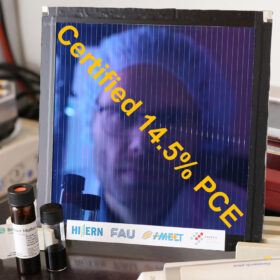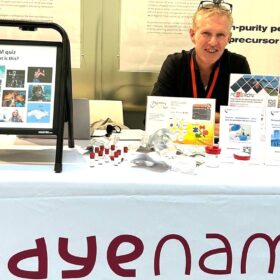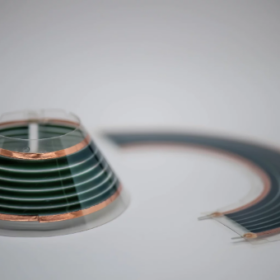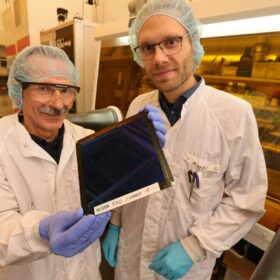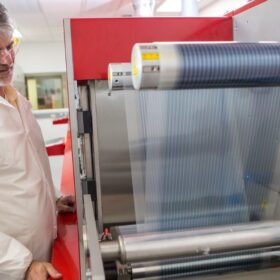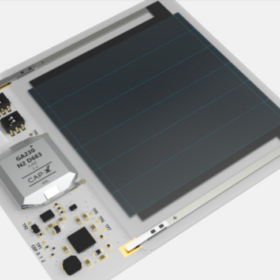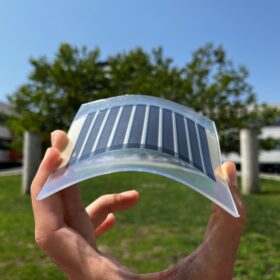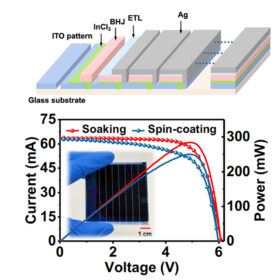Large area organic PV module achieves world record efficiency of 14.5%
The module has a size of 143 mm x 143 mm and an active area of 204.11 cm². The result was certified by the Fraunhofer Institute for Solar Energy Systems (Fraunhofer ISE).
Dyenamo expands materials offer for perovskite-silicon tandem solar cells
In response to its customers’ needs, Sweden’s Dyenamo has added several new perovskite product lines and increased production of materials for the full range of perovskite solar cell designs.
Dracula Technologies integrates organic solar cell into flexible storage device
Dracula Technologies has developed a new indoor technology for its organic photovoltaic (OPV) cells. It designed the tech to replace traditional batteries in connected devices.
German researchers claim record-breaking 14.46% efficiency for organic PV module
A team of scientists at Germany’s Friedrich-Alexander Universität Erlangen Nürnberg has set an efficiency record of 14.46% for an organic PV module. The performance was certified by Germany’s Fraunhofer Institue for Solar Energy’s PV calibration laboratory (CalLab).
Danish slot die coating equipment manufacturer raises capital for expansion
Denmark-based slot-die coating equipment manufacturer FOM Technologies raised DKK 43.60 million ($6.3 million) to finance the next stage of growth, which includes expansion of sales in the United States.
Sweden’s Epishine expands indoor PV module manufacturing capacity
Epishine, an organic PV module manufacturer, has completed a new factory in Linköping, Sweden. The facility uses roll-to-roll equipment to produce new products for low-power battery replacement and the self-powered electronics market.
Epishine unveils organic PV kit for indoor battery-free applications
Sweden-based Epishine has launched a developer kit based on its 6-cell 50 mm x 50 mm organic PV module for prototyping and testing its use in battery-free indoor sensing and monitoring devices.
Dracula Technologies builds organic PV module factory in France
Dracula Technologies has built an organic photovoltaic (OPV) module factory in France to make OPV devices with digital printing technology for connected objects. The facility can produce up to 150 million cm² of OPV modules per year, with the first shipments scheduled to start in 2024.
European research group creates injection molding plastic solar cells
A French-Spanish research team developed organic photovoltaic modules embedded into plastic parts through high throughput injection molding. The researchers injected thermoplastic polyurethane in the modules and found it enhances their mechanical stability while keeping a high flexibility.
Organic cell based on HTL made of indium chloride layer achieves 18.92% efficiency
Scientists in China have fabricated an organic solar cell based on an indium tin oxide hole transport layer modified with an interfacial layer made of recycled indium chloride (InCl3).
